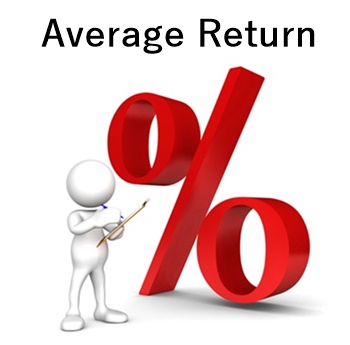
Table of Contents
What is the Average Return?
The Average Return is known as the straightforward mathematical average of a series of returns that have been generated over a period of time. Irrespective of the set of numbers, this average return is calculated in the same manner as that of a simple average.

The numbers get added to each other until one single sum is obtained. And then, it is divided by the number available in the set. One of the examples of average return is the simple arithmetic mean. For instance, suppose you have invested somewhere. And, annually, for five years, you acquired the following return:
5%, 10%, 15%, 20% and 25%.
If you add them together and divide the number by 5, your average return will be calculated. This means, in the five years of timespan, you got 15% of the average return.
How to Calculate Average Return?
To calculate the average return, there is a variety of measures and ways. However, the formula mentioned above is one of the easiest and most prevalent ones. Thus, the average return formula will be:
Average Return = Sum of Returns / Number of Returns
Here, the simple growth rate is one of the balances’ or values’ functions that start and end. It is comprehended by deducting the end value from the start value. Then, the output is divided by the start value.
So, the growth rate formula is:
Growth Rate = (BV – EV) / BV Here, BV = Beginning Value EV = Ending Value
Talk to our investment specialist
What is Geometric Average Return?
If the historical measures of calculating average return are considered, one of the ways of calculation is the geometrical average. Often, the geometric average return is known as the Time-Weighted Rate of Return (TWRR), considering that it excludes the impact of inaccurate growth levels generated over the period of time by various inflows and outflows of money into an account.
On the other hand, the Money-Weighted Return Rate (MWRR) comprises the timing and size of cash flows, making it an impactful measure for Portfolio returns received on withdrawals, interest payments, dividend reinvestments and deposits.
In comparison to the average return, the geometrical mean always remains inferior. However, one of the advantages of using the geometric mean is that there is no requirement of learning the accurate number of sums that have been invested. This calculation entirely concentrates on the return figures.
All efforts have been made to ensure the information provided here is accurate. However, no guarantees are made regarding correctness of data. Please verify with scheme information document before making any investment.












